House of Musa is an independent tissue culture laboratory from the Philippines, founded in 2020. It specializes in cultivating different banana varieties, and it is headed by Love Vine C. Lavador, PhD. From the first moment she cultivated banana tissue culture, she felt curious about how it could be improved. First at a prestigious banana company in Davao Region and now at her own tissue culture laboratory. Here she discovered the benefits and advantages of using grow lights for banana meristems.
The use of fluorescent lighting until recently was widespread, but it comes with various problems such as heat generation and frequent maintenance, which can affect the consistency of a tissue culture lab. As an Agriculturist with nearly two decades long experience in the horticulture industry in Belgium and the Philippines, Love Vine started to increase understanding that plants growing in different stages have different needs. For many tissue culture labs, the key is to get a consistently high-quality banana plant that develops and grows well. Therefore, increasing the production efficiency and meeting the needs of the market.
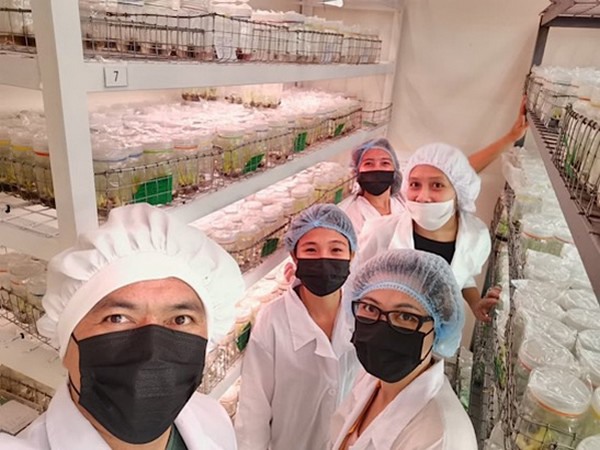 The House of Musa believes that a good plant starts from a Good Source. “Our heartfelt gratitude to PTP and HortiPower lights.” Front: Mark Jun and Love Vine (Proprietors); Middle: Pearl Joy Billeza, Dearly Cutab; Far back: Jean Santarin (Propagators)
The House of Musa believes that a good plant starts from a Good Source. “Our heartfelt gratitude to PTP and HortiPower lights.” Front: Mark Jun and Love Vine (Proprietors); Middle: Pearl Joy Billeza, Dearly Cutab; Far back: Jean Santarin (Propagators)
Since 2019 Love Vine started experimenting with LEDs, including with HortiPower, which is supplied through PTP from Singapore. “I ran several experiments with common LEDs as well as horticultural LEDs. At that time, I consulted HortiPower for banana tissue culture. They worked with me to set up different experiments for multiplication and rooting. After some optimization, the results were amazing. The multiplication rate improved by a factor of up to 3, and the rooting stage increased by a factor of up to 4.” These are significant numbers, and the meristems are of higher quality. Consequently, these improve the revenue and profitability of tissue culture.”
One of the problems people encounter with white LEDs is that plant tissue culture becomes thin and springy, resulting in slower growth and a lower survival rate. This is because common LEDs are optimized for the human eye, which is mainly sensitive to green light. However, plants require only specific colors like blue, red, and far red to develop and grow well. “Different kinds of blue and deep red can stimulate growth, and far-red can stimulate the shape and morphology of plants,” says Meng Meng - plant scientist at HortiPower. The best lighting depends on the grower’s goal as well as the growth environment. “Based on the desired outcome, we can recommend light intensity, spectrum, and ratio for a specific variety and growth stage,” she adds.
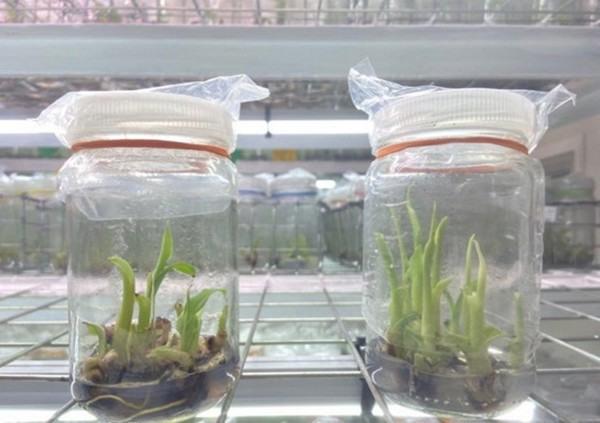
On the left tissue culture under normal LED, on the right, the tissue culture stage 3 under HortiPower Nurser 3
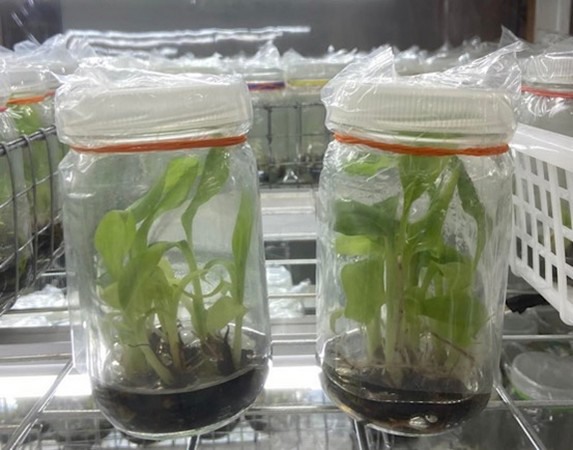
On the left tissue culture under normal LED, on the right, the tissue culture rooting stage under HortiPower Nurser 3
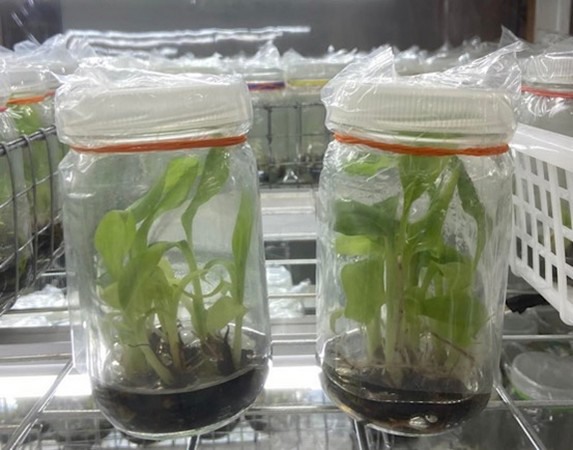
On the left, the tissue culture rooting stage under normal LED, ‘cv’ Cavendish. On the right, the tissue culture under HortiPower Nurser 3
House of Musa now specializes in all types of banana tissue culture, ranging from the Cavendish and local varieties such as Lakatan and Cardava. “We supply thousands of plants to banana plantations as well as bigger corporations. We blend technology and plant science to produce consistent and high-quality tissue-cultured plants. While we can expand the lab space, I primarily look at high-quality tissue culture and make the multiplication and rooting stages more efficient. High-quality tissue culture is more likely to develop into a healthy and strong plant that grows well at the plantation,” says Vine.
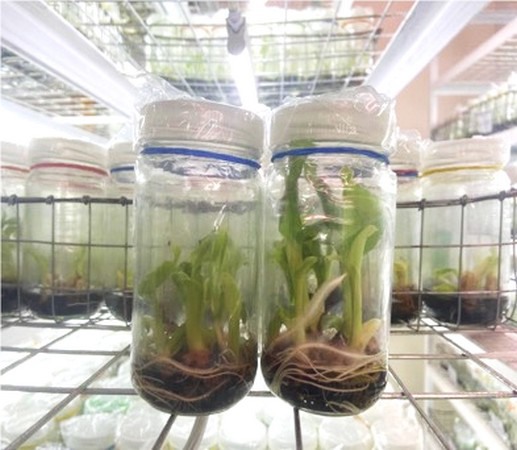
On the left tissue culture under normal LED from stage 0 to rooting stage. On the right tissue culture under HortiPower LED from stage 0 to rooting stage of ‘cv’ Cardava.
Lighting for a tissue culture laboratory is more than illuminating the space or providing plant-centric lighting. A lighting plan and visualization help understand and compare different options. House of Musa engaged HortiPower early in the process for their new facility in Davao. “Based on the lab dimensions, we helped them to optimize shelf space and make a lighting design proposal to optimize the lighting intensity, the uniformity, and with an energy-efficient layout,” says Jille, who led the project at HortiPower. “For tissue culture, the commonly used products are Nurser 1 and Nurser 3. For the largest area of the lab, Nurser 3 was proposed because people like the ease of installation, and it is generally a very good light to support plant development and growth. Yet new plant varieties may require different kinds of light, and therefore it is good to adjust intensity and spectrums and see the plant response. Nurser 1 is perfect for this research purpose, and House of Musa has a dedicated area for this”.
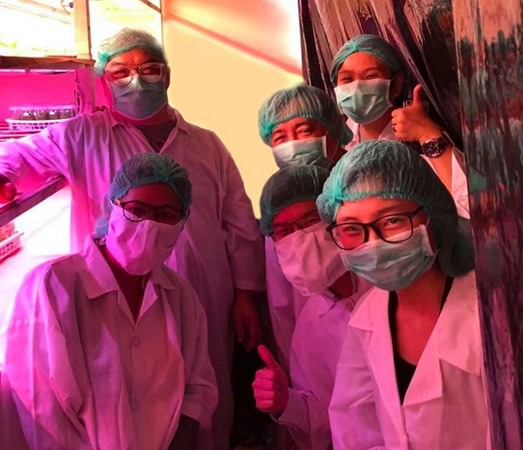
From left to right at the back: Banly from HortiPower, CY from PTP, Suelyn from PTP, from left to right at the front: Love Vine from House of Musa, Jille from HortiPower, Meng Meng from HortiPower
“Until recently, tissue culture laboratories wanted to reduce maintenance and energy, so they chose LEDs that could retrofit their existing labs,” said CY Fun, General Manager at PTP Singapore. “After working with high-end labs in the Philippines, Vietnam, and Indonesia, we’ve helped them to acquire their data insights in their lab that the right light will significantly increase yield and make their production planning process easier. We serve the labs that are optimizing for yield and those that seek energy efficiency. That’s why we’ve pushed the research and development team to expand the HortiPower Nurser range with different dimensions, spectra, controls, and accessories. Now we can help them with light for every lab and countless plants so they can grow well and get more business.”
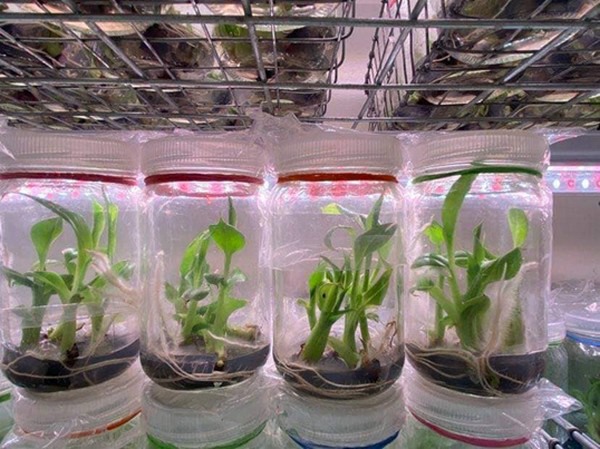
‘cv’ Cardava under HortiPower lights
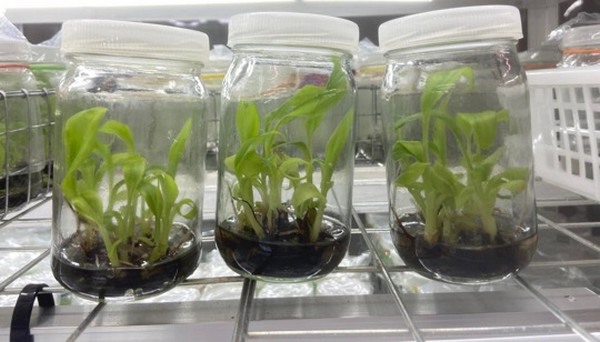
‘cv’ Cavendish under HortiPower lights
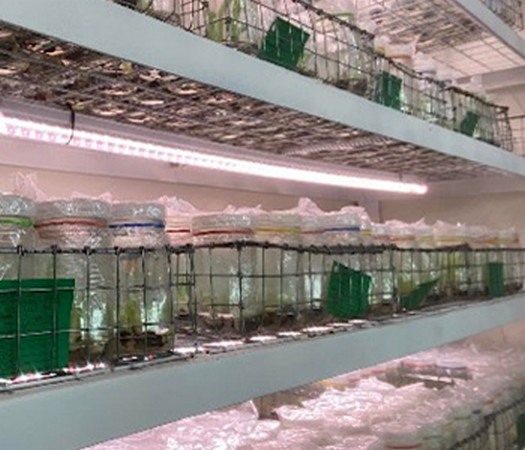
Shelves using Nurser 3 HortiPower lights with ‘cv’ Cardava
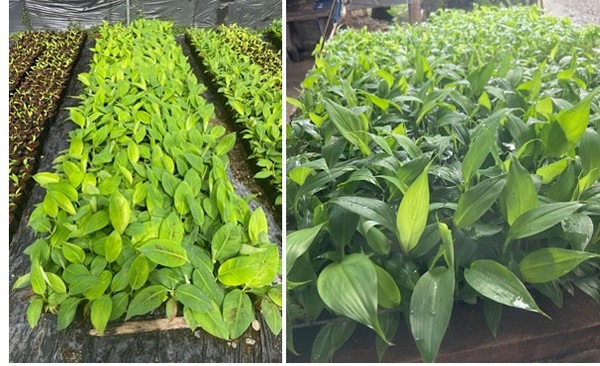
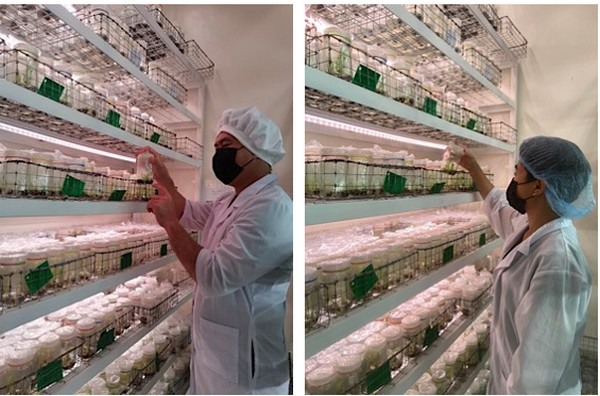
The Propagation Team that can compare the growth of the plants under the different light spectrums concludes that plants under HortiPower lights grow better compared to plants under Ordinary LED lights
For more information:
House of Musa
lavadorlvc@gmail.com
+63-917-176-3177
Hortipower
jk@hortipower.com
www.hortipower.com
